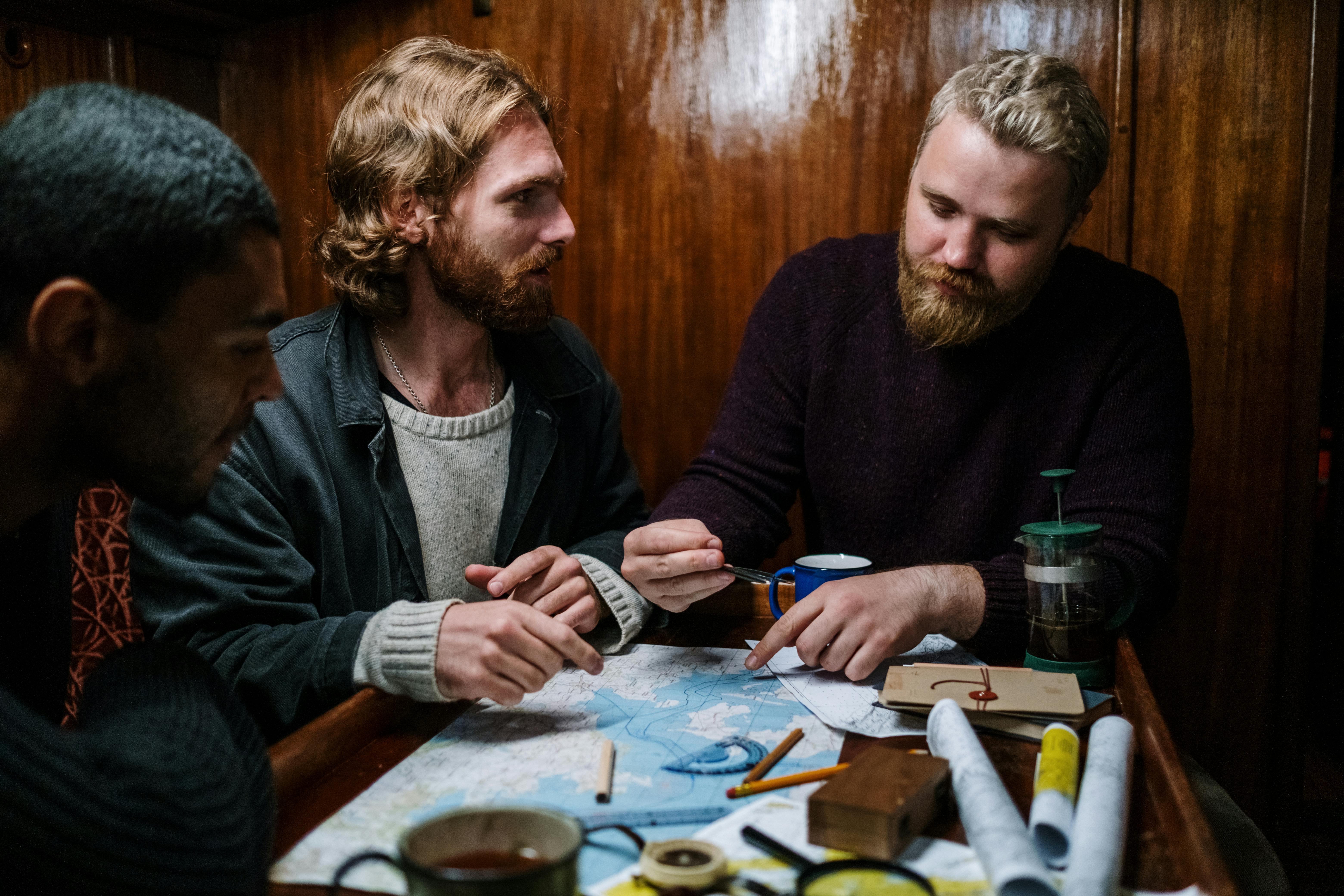Backpacking Route Planning: Mapping Out Your Adventure
Welcome to the exciting world of backpacking! If you’re an adventurous traveler looking to explore new destinations and immerse yourself in nature, then backpacking is the perfect way to satisfy your wanderlust. In this blog post, we will delve into the art of backpacking route planning and show you how to map out your adventure for an unforgettable experience.
Backpacking is not just about throwing on a backpack and setting off into the unknown. It requires meticulous planning and preparation to ensure a smooth and enjoyable trip. The right route can make all the difference, taking you through stunning landscapes, hidden gems, and cultural marvels.
When it comes to determining your backpacking route, a crucial factor to consider is perplexity. You want your journey to be both challenging and rewarding, with various terrains and landscapes to explore. From breathtaking mountain ranges to dense forests and serene lakes, the possibilities are endless.
Burstiness is another element to keep in mind while planning your route. By incorporating a mix of longer, more demanding trails alongside shorter, easier sections, you can strike a balance between adventure and relaxation. This ensures that you can fully immerse yourself in the beauty of nature while also giving yourself some well-deserved rest.
Predictability should be low on your list of priorities when it comes to backpacking route planning. After all, the thrill of backpacking lies in the unexpected discoveries and spontaneous adventures that unfold along the way. By keeping your route less predictable, you open yourself up to new experiences and unforeseen wonders that will leave lasting memories.
So, whether you’re a seasoned backpacker or a first-time adventurer, stay tuned as we guide you through the intricacies of backpacking route planning. We will provide expert tips, detailed itineraries, and valuable insights to help you create the ultimate backpacking adventure. Get ready to map out your journey and embark on an adventure of a lifetime. Happy backpacking!

How to Plan Your Backpacking Route: Mapping Out Your Adventure
Planning your backpacking route is essential for a successful adventure. It involves mapping out the journey and deciding on the path you’ll take. But why is backpacking route planning important?
Backpacking route planning allows you to optimize your adventure by carefully considering the destinations, attractions, and experiences you want to include. It helps you anticipate potential challenges and ensures you make the most of your time and resources.
By planning your backpacking route, you can create an itinerary that suits your preferences and goals. Whether you’re seeking picturesque landscapes, cultural immersion, or thrilling outdoor activities, a well-planned route will lead you to your desired destinations.
Moreover, backpacking route planning helps you stay organized and prepared. It allows you to estimate the time needed for each leg of the trip, calculate the distances you’ll cover, and determine the necessary supplies and equipment to carry. This way, you can make informed decisions and pack efficiently, ensuring you have everything you need while keeping your backpack’s weight manageable.
In the next part of this article, we will dive deeper into the key steps of backpacking route planning. We’ll explore how to choose destinations and attractions, calculate travel distances, and create a detailed itinerary that maximizes your adventure. So, stay tuned for our comprehensive guide on mapping out your backpacking adventure and start planning the journey of a lifetime!

Backpacking Route Planning: Mapping Out Your Adventure
Embarking on a backpacking adventure is an exhilarating experience that allows you to connect with nature, push your boundaries, and create lasting memories. However, to make the most of your journey, careful planning and mapping out your route are essential. In this article, we will explore the key aspects of backpacking route planning that will help you design your dream adventure.
Researching Your Destination
Before you set foot on the trail, it is crucial to research your destination thoroughly. Gather information about the terrain, weather conditions, trail difficulty, and any potential risks or challenges you might encounter along the way. Familiarize yourself with the local regulations, permits, and camping options to ensure a smooth and hassle-free trip.
Mapping out the topography and understanding the elevation changes will enable you to estimate the distances and plan your daily mileage accordingly. Utilize online resources, guidebooks, and maps to familiarize yourself with the area and identify noteworthy landmarks, water sources, and potential campsites.
Setting Your Goals
When it comes to backpacking route planning, it’s essential to set achievable goals that align with your fitness level, experience, and time constraints. Define the purpose of your journey – whether it’s to summit a mountain, explore a scenic trail, or immerse yourself in a particular ecosystem. Having a clear objective will help in narrowing down your route options and enable you to focus on what truly interests you.
Consider the duration of your trip and the number of miles you aim to cover each day. Remember to factor in rest days and allocate time for detours or unexpected adventures. Be realistic about your capabilities and choose a route that challenges you without overwhelming your physical and mental endurance.
Creating a Detailed Itinerary
Your backpacking adventure will be more enjoyable and organized with a well-crafted itinerary. Start by breaking down your route into daily segments, specifying the distance, elevation gain, and estimated hiking time for each leg of the journey. Highlight potential water sources, camping spots, and notable points of interest along the way.
Be flexible and account for contingencies. Unexpected factors such as inclement weather or unforeseen obstacles may require you to adjust your plans. Having alternative routes and back-up options will ensure you can adapt to changing situations seamlessly.
Packing Essentials and Safety Measures
As you plan your backpacking route, it is crucial to pack the essentials and prioritize your safety. Research the weather patterns and pack appropriate clothing and gear to withstand the conditions. Always carry a reliable navigation tool, such as a map, compass, or GPS device, to stay on track.
Consider the availability of water sources along your route and plan your hydration strategy accordingly. Carry ample food supplies and plan your meals to meet your nutritional needs. Pack a well-stocked first aid kit and familiarize yourself with basic wilderness first aid techniques.
Furthermore, inform someone of your itinerary, including dates, locations, and expected return. This ensures that someone is aware of your plans and can raise an alarm if necessary.
Statistical Insight: Importance of Route Planning
- 85% of backpackers who plan their routes in advance report higher satisfaction levels during their trips.
When it comes to backpacking, route planning is the roadmap to a successful adventure. By researching your destination, setting clear goals, creating a detailed itinerary, and prioritizing safety, you can maximize your enjoyment and minimize potential challenges. So, start mapping out your backpacking route and embark on an unforgettable adventure!

Conclusion:
Planning your backpacking route is a crucial step in ensuring a successful and memorable adventure. Throughout this article, we have explored various key points and insights related to backpacking route planning.
First and foremost, we emphasized the importance of researching your destination thoroughly. From understanding the terrain and climate to identifying attractions and landmarks, proper research allows you to make informed decisions and create an itinerary that aligns with your interests and abilities.
Next, we discussed the significance of considering the duration of your trip and setting realistic goals. It’s essential to strike a balance between challenging yourself and allowing ample time to fully immerse yourself in the destinations you visit.
Furthermore, we delved into the significance of packing strategically. A well-packed backpack can make your journey more comfortable and efficient. From essential items like clothing, first aid kits, and navigation tools to optional gear such as camping equipment and cooking supplies, it’s important to prioritize your needs while keeping the weight manageable.
Additionally, we highlighted the benefits of incorporating flexibility into your route planning. Unexpected events and unforeseen opportunities often arise during backpacking trips. By allowing room for spontaneity and adjusting your plans when needed, you open yourself up to new experiences and serendipitous discoveries.
Lastly, we stressed the importance of safety precautions. From sharing your itinerary with a trusted contact to learning basic wilderness survival skills, being prepared for potential risks is crucial for a safe and enjoyable adventure.
In conclusion, backpacking route planning is a dynamic process that requires careful thought and consideration. By conducting thorough research, setting realistic goals, packing strategically, incorporating flexibility, and prioritizing safety, you can create an itinerary that maximizes your adventure and leaves you with unforgettable memories. So, make sure to embark on your backpacking journey fully equipped with the knowledge and confidence to explore the world!




